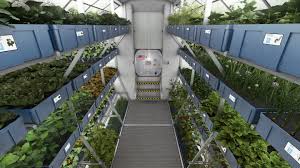
Breaking News
 Mamdani's NYC Tenant Czar Called To 'Seize Private Property,' Calls Home Ownership
Mamdani's NYC Tenant Czar Called To 'Seize Private Property,' Calls Home Ownership
 Trump basks in the glory of his Venezuela raid - but now his allies are reviving a question they...
Trump basks in the glory of his Venezuela raid - but now his allies are reviving a question they...
 Cummings: Deep State Will 'Smash The Absolute Living Sh*t Out of Farage'...
Cummings: Deep State Will 'Smash The Absolute Living Sh*t Out of Farage'...
 Musk & Trump Grab Dinner After Maduro Arrest
Musk & Trump Grab Dinner After Maduro Arrest
Top Tech News
 The First Production All-Solid-State Battery Is Here, And It Promises 5-Minute Charging
The First Production All-Solid-State Battery Is Here, And It Promises 5-Minute Charging
 See inside the tech-topia cities billionaires are betting big on developing...
See inside the tech-topia cities billionaires are betting big on developing...
 Storage doesn't get much cheaper than this
Storage doesn't get much cheaper than this
 Laser weapons go mobile on US Army small vehicles
Laser weapons go mobile on US Army small vehicles
 EngineAI T800: Born to Disrupt! #EngineAI #robotics #newtechnology #newproduct
EngineAI T800: Born to Disrupt! #EngineAI #robotics #newtechnology #newproduct
 This Silicon Anode Breakthrough Could Mark A Turning Point For EV Batteries [Update]
This Silicon Anode Breakthrough Could Mark A Turning Point For EV Batteries [Update]
 Travel gadget promises to dry and iron your clothes – totally hands-free
Travel gadget promises to dry and iron your clothes – totally hands-free
 Perfect Aircrete, Kitchen Ingredients.
Perfect Aircrete, Kitchen Ingredients.
 Futuristic pixel-raising display lets you feel what's onscreen
Futuristic pixel-raising display lets you feel what's onscreen
 Cutting-Edge Facility Generates Pure Water and Hydrogen Fuel from Seawater for Mere Pennies
Cutting-Edge Facility Generates Pure Water and Hydrogen Fuel from Seawater for Mere Pennies
Green thumb in space: NASA has decided that gardening in space is crucial for the ...

(Natural News) Aside from having to adjust to an environment that's vastly different from Earth's, future explorers will have to learn how to grow their own food so they can have access to vegetables while they're exploring space.
However, this isn't as easy as cultivating a garden in your backyard. In space, astronauts will have to deal with the lack of gravity, sunlight, and wind, a factor that's not a problem for landbound individuals.
To address this concern, the National Aeronautics and Space Administration (NASA) has lent a hand to help the next generation of explorers learn how to tend a garden in space. This skill is crucial since young explorers will have to know how to grow their own food, especially if they're going on expeditions that may last for several months or years. NASA has enlisted the help of professional botanists and novice gardeners to develop space-ready gardening techniques.
Astronauts also need access to fresh produce as nutrients, such as vitamins C and K, will break down in freeze-dried foods. If they don't consume nutrient-rich foods, astronauts can suffer from health problems like cancer, heart disease, infections, and poor blood clotting.
Dr. Carl Lewis, the director of the Fairchild Tropical Botanic Garden who's also spearheading the space gardening project, said that because there's a vast number of plants, it can be hard to determine which ones are suitable for food production in space.
So far, Dr. Lewis' botanic garden has identified 106 plant varieties that can grow well in space. The list includes cabbages and lettuces.
Fairchild Tropical Botanic Garden is working with 15,000 student botanists from 150 different schools. The students will try to cultivate plants in conditions that mimic space. They'll plant vegetables in their classrooms using trays rigged with lights that simulate "grow boxes" used in space. The students involved in the project will take care of the plants and record data on their progress, which will then be shared with NASA. (Related: Greenhouse of the Future is the perfect structure for hosting Food Rising Mini-Farm Grow Boxes.)
Rhys Campo, a 17-year-old high school student who's growing red romaine lettuce, shared that they're using set-ups that are more advanced than the usual gardening equipment.
The students sometimes encounter variables, such as overwatering and different classroom temperatures. However, NASA plant scientist Gioia Massa remains hopeful. She noted, "If you have a plant that does well in all that variability, chances are that plant will do well in space."
The four-year project, which has funding worth $1.24 million from NASA, is almost 50 percent done.
Veggie grow boxes
Astronauts in the International Space Station (ISS) are also facing some gardening obstacles while in orbit.
Veggie, the first portable grow box for space that features LED lights, was tested at the ISS in 2014. While some of the lettuce did not germinate, others died of drought. Despite these failures, the astronauts kept trying. One year later, they were finally able to grow lettuce.
Aside from two Veggie grow boxes at the ISS, there is also a third called the Advanced Plant Habitat.



